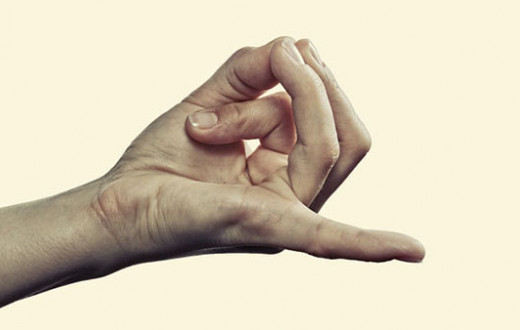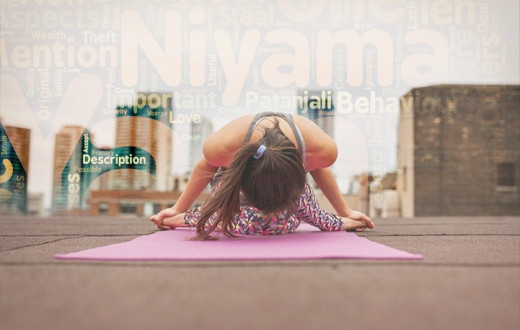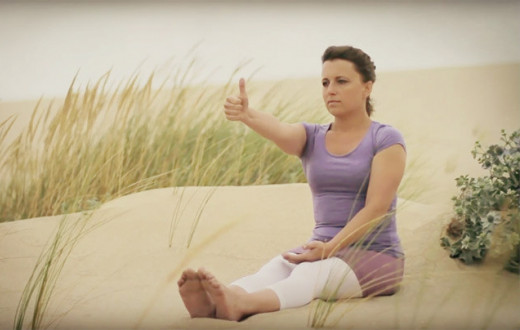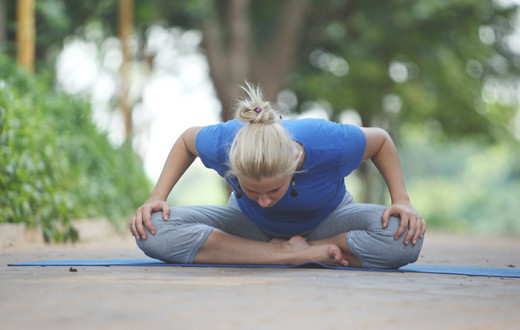By Sriram Sarvotham┃Posted: May 30, 2019
As we approach the longest day of the year, the summer solstice, which coincides with International Day of Yoga as celebrated around the world, we see that the spotlight is on the practice of surya namaskar (sun salutation), a sequence of 12 postures performed in a gentle flow. Yoga practitioners do many rounds of sun salutations to honor International Day of Yoga (IDY).
While there are plenty of wonderful resources that detail the practice of sun salutation, in this short post I wish to share my thoughts on and appreciation for this wonderful practice, based on personal experience. First, here’s a short video I prepared demonstrating 2 rounds. The first round is silent, and the second round is done while chanting the associated mantras:
[Important note: The video is for demonstration purposes only; please don’t try to learn the practice from the video! If you’re eager to learn, please approach a qualified yoga teacher.]
I learned sun salutation from my teacher, Yogacharya Ramaswami Subramanian, on the first day I joined his yoga school 32 years ago. Ever since, this wonderful practice has been an integral component of my spiritual practice.
The sun salutation is a universal practice; it’s done by most yogis and yoginis (male and female yoga practitioners). From beginning students of yoga to experienced and seasoned practitioners, everyone enjoys this practice.
Benefits of surya namaskar
For the body, the sun salutation is a complete and well-rounded exercise that benefits all the major muscles, joints, and vital organs. Every pose in the sequence has its counterpart as well, making it a well-balanced exercise. For example, for every forward bending pose in the sequence, you will find a backward arching pose. Similarly, the sequence is a balance of strengthening poses as well as stretching poses.
The physical benefits of sun salutations are many. Regular practice promotes strength, vitality, lightness and agility. Furthermore, it’s said that just as darkness cannot abide in the presence of light, illness cannot sustain itself for long in the presence of a sun salutation practice. The wonder is that it’s a complete practice for physical, mental and spiritual well-being that isn’t time consuming at all. One round of sun salutation takes only half a minute to two minutes to perform (depending on the pace), so it can be easy to devote time for 6 to 12 rounds everyday.
Sun salutation can be practiced at different speeds. While fast rounds of sun salutation help to warm up the body and get rid of sluggishness (tamas), a slow and graceful pace can help to invoke a deep meditative state of awareness. Over the years, I have gravitated towards slow sun salutations where I coordinate the breath with the flow of postures. Specifically, using long ujjayi breaths helps to profoundly elevate the quality of the practice.
Like a cardio workout, the sun salutation increases the pace of the heartbeat during the practice. However, the emphasis is to keep the flow of breath smooth and controlled, preferably using the ujjayi breath. Therefore, we have a unique combination of elevated heartbeat and slow, deep breaths. This helps to strengthen the diaphragm and other muscles involved in respiration.
The sun salutation is much, much more than just a physical practice. Just a few rounds helps promote a high degree of alertness and sharpens the intellect. Our awareness, which is represented as a glow of light in yoga (jyotismati), shines brightly like the rays of the sun. Truly, the practice of sun salutation is a wonderful way to move from darkness to light (tamaso ma jyotirgamaya).
Sun salutation also makes the prana (life energy) in the system flow briskly, which allows the cells of the body to thrive with vitality. When the energy flow is sluggish, the prana doesn’t reach all the cells of the body, and consequently we feel dull and lethargic. Sun salutation promotes the brisk circulation of prana so that every cell in the body has access to the fresh supply.
Here is an analogy: a river, which is a moving body of water, allows life around it to thrive, whereas a stagnant pool of water attracts disease and decay. In a similar manner, the healthy flow of prana in the system infuses every cell of the body with life and vitality. I’ve also observed that after several rounds, any clog in the nostrils (and all the nadis, or channels that carry prana) are cleared away and the breath and prana flow evenly. This allows a healthy pattern of left and right nostril dominance to alternate during the day.
When and how to practice
Traditionally, sun salutation is done in the morning, facing the rising sun. It’s a profoundly spiritual practice, and a prayerful expression of gratitude and appreciation to the source of all energy that powers this planet.
The sun salutation is done along with Sanskrit mantras (chants) associated with each of the 12 poses. Each mantra is a synonym for and a way to connect with the sun. Chanting of the mantras during sun salutation helps to promote greater breath control. It’s also a way to strengthen the vocal cords and promote voice control.
In some of the poses (especially the ones involving arching the back), beginning practitioners may experience a choking sensation, making it difficult to chant the mantra out loud. With continued practice, as we train the muscles of respiration and the vocal cords, it becomes easier to chant in all 12 postures. No wonder many musicians in India use sun salutation with mantras for voice readiness!
As I said in the beginning, there are many wonderful resources on sun salutation (my favorite book is “Surya Namaskara: A Technique of Solar Vitalization,” authored by the renowned Yogi Paramahamsa Satyananda Saraswati). If you’re eager to learn the practice, I encourage you to approach a qualified yoga teacher. The teacher can guide you to warm up and prepare the body first, and then to properly practice sun salutation. The relaxation (savasana) afterwards is also equally important and helps the body to unwind and rejuvenate.
Finally, here’s a lovely article on sun salutation written by my Sri Sri Yoga Teacher, Yogashiromani Krishan Verma.
This article was originally published on Sriram’s Blog and is re-posted here with the author’s permission.
Shriram Sarvotham, a yoga teacher since 1991, holds a Ph.D. degree in Electrical Engineering from Rice University, Houston, TX. He works in the tech industry in Silicon Valley California.





























